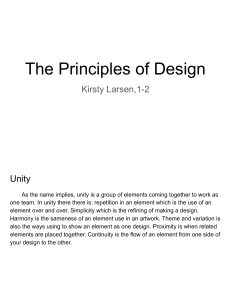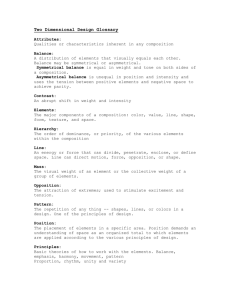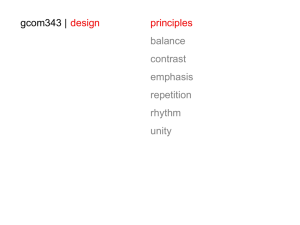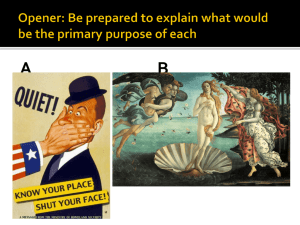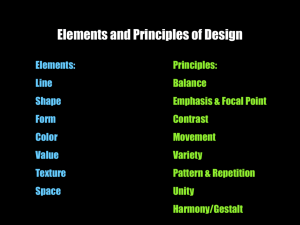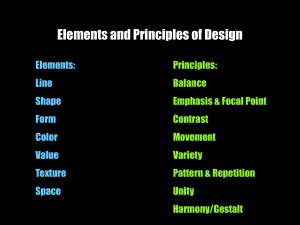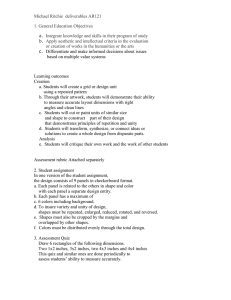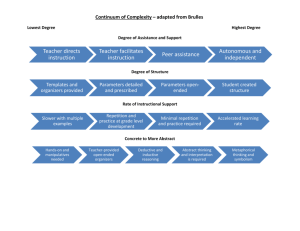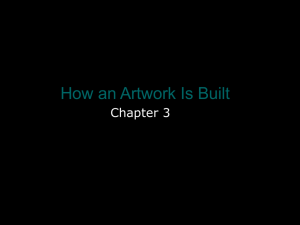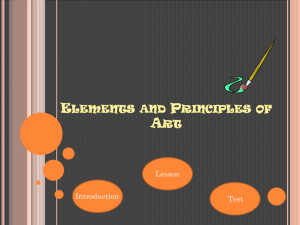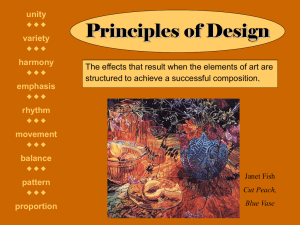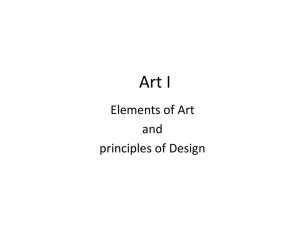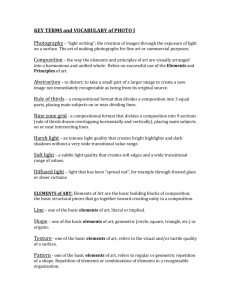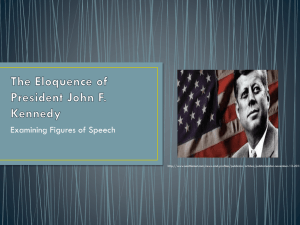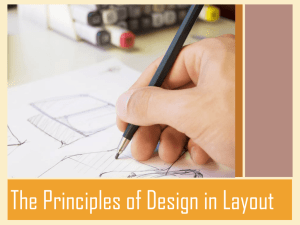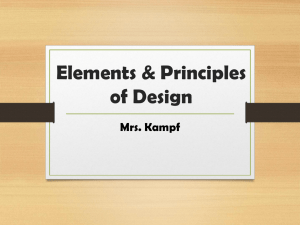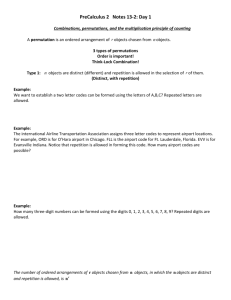Design Principles
advertisement
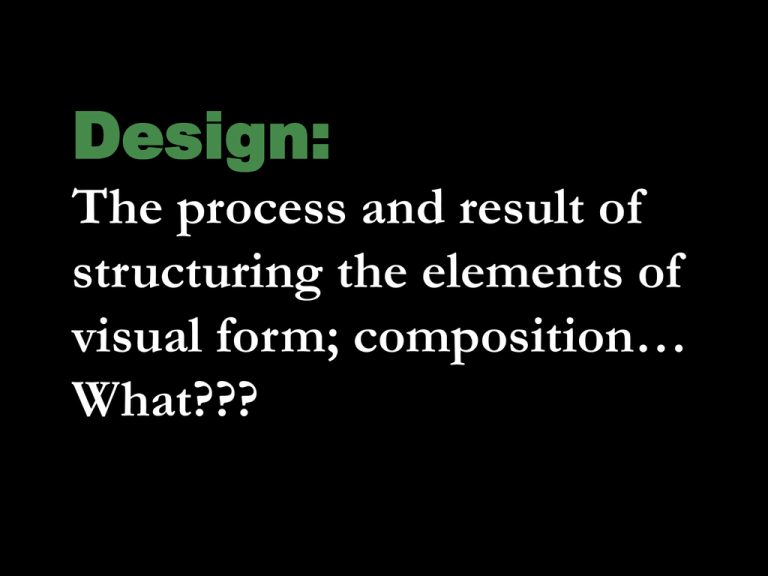
Design: The process and result of structuring the elements of visual form; composition… What??? Composition: The bringing together of parts or elements to form a whole; the structure, organization or total form of a work of art Parts or Elements = Elements of Art line, shape, form, texture, color, value, space ** What makes up a work of art Structure or Organization = Principles of Design proportion, balance, emphasis, pattern/repetition, rhythm/movement, contrast, variety, harmony/unity ** What you do with the elements of art to create a successful composition Unity/Harmony: An agreement that exists among the elements in a design; they look as though some visual connection beyond mere chance has caused them to come together Ways to achieve unity: • Proximity • Repetition • Continuation • Proximity simply putting the elements close together Wayne Thiebaud. Paint Cans. 1990. • Repetition Something that repeats in various parts of the design to relate the parts to each other. Edgar Degas. The Millinery Shop. 1890. • Continuation Something “continues” usually a line or an edge. The viewer’s eye is carried smoothly from one element to the next. Balthus. The Living Room. 1943. Emphasis (focal point): Any forcefulness that gives importance or dominance (weight) to some feature or features of an artwork; something singled out, stressed, or drawn attention to. Often, emphasized elements are used to direct and focus attention on the most important parts of a composition — its focal point. Ways to achieve emphasis: • Contrast • Isolation • Placement • Contrast Whatever interrupts an overall feeling or pa automatically attracts the eye by its difference Ex: Color, size, shape etc. • Isolation By simply offsetting one element of a composition, it grabs the viewers attention. The element doesn’t need to be different from the other elements in the work just placed in a different spot. • Placement If many elements point to one item, our attention is directed there, and a focal point results Jan Vermeer. The Music Lesson. 1664 Balance: the arrangement of elements to create a sense of visual stability in a work of art Three types of balance : • Symmetrical • Asymmetrical • Radial • Symmetrical the organization of parts of a composition so that one side mirrors, or duplicates the other. With the two sides being so much alike, there is an obvious visual visual importance to whatever element is placed on the center axis. Symmetrical balance is rarer in painting than in architecture. In fact, relatively few paintings would fit a strict definition of symmetry. • Asymmetrical the organization of parts of a composition so that one side does not duplicate the other. Balance is achieved with dissimilar objects that have equal weight or equal eye attraction. A large, simple shape is balanced by a smaller, complicated shape. • Radial all the elements circle out from a common central point. A radially balanced design is also symmetrically balanced. Rhythm: refers to a regular repetition of elements of art (shape, color, line, form) to produce the look and feel of movement. It is often achieved through the careful placement of repeated components which invite the viewer's eye to jump rapidly or glide smoothly from one to the next. Ways to achieve rhythm: • Repetition • Repetition Something that repeats in various parts of the design to relate the parts to each other. Rhythm involves a clear repetition of elements that are the same or only slightly modified. Piet Mondrian. Broadway Boogie Woogie. 1943. Bridget Riley. Drift No.2. 1966. Proportion: refers to the relative size—size measured against other elements or against some standard. Proportion is closely tied to emphasis. • Large and Small Scale Together • Unexpected or Exaggerated Scale Find at least 2 Principles of Design that you feel are clearly illustrated in the artwork below and describe how they are achieved? Winslow Homer. Snap the Whip. 1872. Contrast/Variety: incorporating differences in elements to enhance the interest in a work of art. Variety creates visual excitement and acts to counter unity.The sameness of too much unity is boring, and the diversity of uncontrolled variety is chaotic, but a balance between unity and variety creates “life” in a work of art. Jacob Lawrence. Going Home. 1946. Pattern/Repetition: the repetition of elements or combinations of elements in a recognizable organization. Types of Pattern : • Regular/Planned • Irregular/Random • Regular Pattern the parts are repeated accurately. • Irregular Pattern the parts are repeated, but do not seem planned. Claude Monet. Water Lillies. 1906. Gustav Klimt. Portrait of Adele Bloch-Bauer I. 1907.
